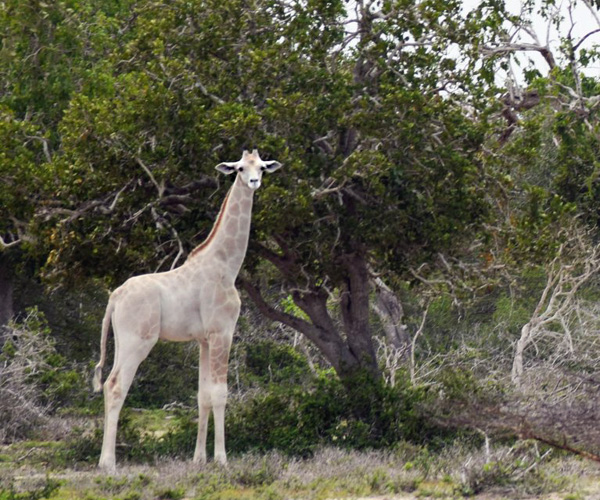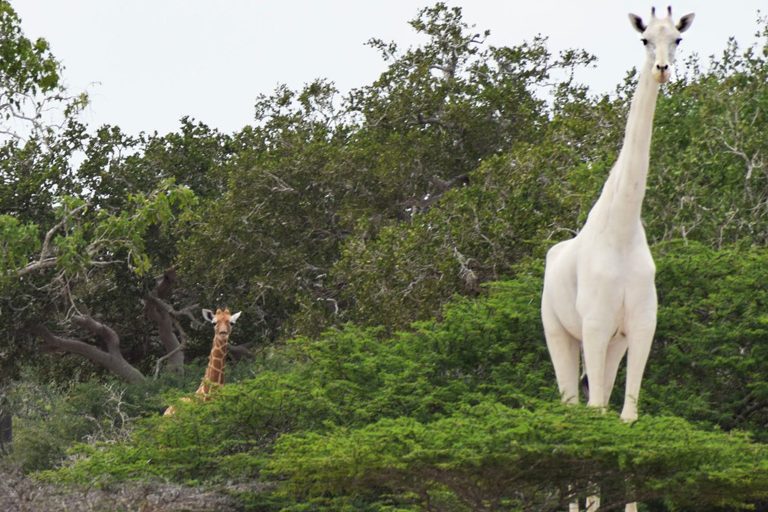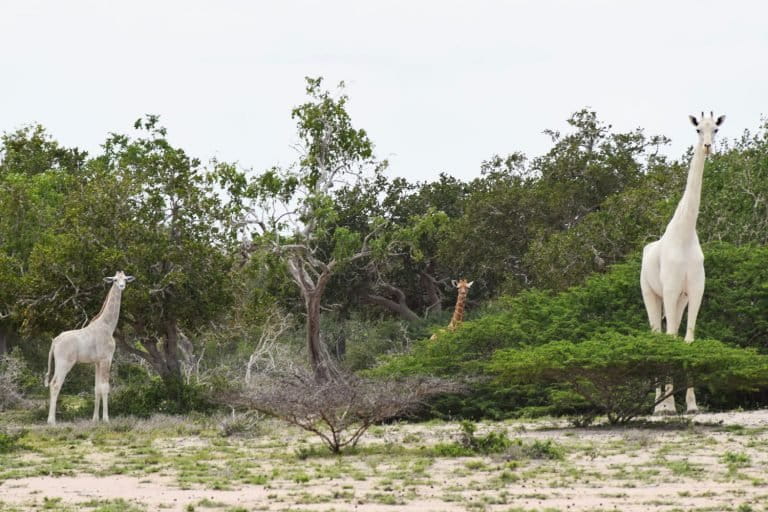- Two rare white giraffes have been captured on video in the wild for the first time, reports a wildlife conservancy in Kenya.
- The giraffes are leucistic, meaning they have a genetic condition that inhibits pigmentation in skin cells.
- The giraffes are not albino, or lacking melanin throughout their bodies.
Two rare white giraffes have been captured on video in the wild for the first time, reports a wildlife conservancy in Kenya.
The giraffes, which are leucistic, meaning they have a genetic condition that inhibits pigmentation in skin cells rather than albino, or lacking melanin throughout their bodies, were first reported back in June by villagers near the Ishaqbini Hirola Conservancy in Garissa county in northeastern Kenya, according to a blog post from the conservancy. Upon hearing of the report, members of the conservancy — including Abdullahi H. Ali, the founder of the Hirola Conservation Program — “hurriedly headed to the scene” where they encountered the animals along with a conventionally colored reticulated giraffe.
“They were so close and extremely calm and seemed not disturbed by our presence. The mother kept pacing back and forth a few yards in front of us while signaling the baby giraffe to hide behind the bushes – a characteristic of most wildlife mothers in the wild to prevent the predation of their young,” wrote the conservancy in a blog post.

While rare, the sighting is not without precedent. In 2016 there was a report of a wild white giraffe in Tanzania’s Tarangire National Park. A second sighting was reported in March 2016 in Ishaqbini, according to the conservancy. Other animals, ranging from mammals to birds to reptiles, have also been spotted in the wild with the condition.
Nonetheless, the sighting has sparked excitement across the internet and widespread press coverage. Ali says he hopes to translate that attention into support for protecting endangered wildlife in northern Kenya, including the hirola antelope, which is the world’s most threatened antelope. The region has been hard hit by poaching.

“These rare snow white giraffes shocked many locals including myself but these gave us renewed energy to protect and save our unique wildlife,” said Ali in the conservancy’s blog post. “I am positive these rare giraffes will change the perception of outsiders regarding north eastern Kenya.”
“In partnership with local communities, relevant authorities in Kenya and international partners, we promise to protect these beauties and their vital habitat.”
Giraffe populations are indeed under threat across Africa due to loss of habitat and hunting. According to 2016 assessment by the International Union for the Conservation of Nature’s Red List, the number of giraffes in the wild plunged 40 percent over the past 30 years. Less than 100,000 are thought to remain.


